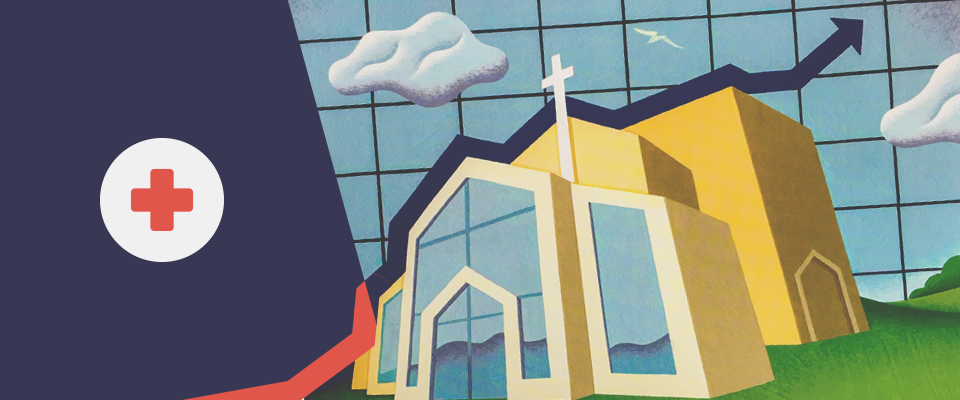Most church leaders are all too familiar with the fact that giving can fluctuate dramatically month to month. Because of this fluctuation, it’s important to maintain a certain level of liquidity, which is different for every church based on their needs. Liquidity is basically the amount of cash that can be obtained at any given time. With adequate liquidity, ministries can have the financial flexibility to cover unforeseen expenses, especially during lower giving times. Without a cash reserve to draw from, many churches have found themselves scrambling to raise funds when needs come up. This can overburden a congregation, causing regular tithes and missions offerings to suffer. Alternatively, a church may have to take on more debt than would be wise.
A healthy cash reserve protects against:
- unexpected expenses
- declines in giving
- building maintenance and repair costs
- periods of transition
so you can better plan for:
- new ministry initiatives
- large purchases
- building renovations and expansion.
But first, you have to figure out the right liquidity level for your ministry’s needs. To do that, consider three areas:
- Historic cash flow fluctuations
- Past unplanned expenses
- Anticipated future opportunities
Together these can help determine your target liquidity — the amount you should maintain in cash reserves.
How to reach your target liquidity
Build saving into the budget.
As a best practice, your annual church budget should provide for a positive cash flow (more money coming in than going out). Subtract total expenses from total revenue to ensure you have some money to set aside. Use these funds to build your cash reserves.
As a guideline, aim to designate 10% of the church budget towards building up your cash reserves. This may require reworking the budget to reduce expenses. If you can’t do 10% right away, aim for 5% and build up.
First, the money should be set aside to build up three to six months of operative costs. Then, when the HVAC system breaks down or the carpet wears out, you’ll be able to absorb the expense without having to go into debt.
After you’ve built up three to six months of operating costs, continue taking advantage of the positive cash flow created by your budget to save for future church goals and be able to respond to ministry opportunities.
To help you get started, use the church budget template in the Interactive Guide to Church Finance.
Although building cash reserves into the church budget is the best long-term solution, if you’re needing cash quickly, you may have to get creative. One pastor, new to the church, noticed it didn’t have an emergency fund. In the past, it had struggled to raise money for needs as they came up. To jumpstart their cash reserve, he decided to sell unused assets the church owned, including furniture, old audio and video equipment, choir robes, and tools. He also invited people to donate unwanted items for the sale. In this way, the church raised over $10,000.
Grow your savings through short-term investments.
Once you have some cash built up, consider growing it through short-term investments. One effective strategy is laddering. Laddering simply means staggering the investments so they mature at different times. This lets you take advantage of higher interest rates while still having regular access to funds.
For example, rather than investing $75,000 for a one-year period and renewing each year, create a three-year ladder by putting $25,000 in a one-year investment, $25,000 in a two-year investment, and $25,000 in a three-year investment.
After the first year, take the maturing one-year investment and place it in a new three-year investment. After the second year, the initial two-year investment matures. Put that into a new three-year investment. After the third year, the initial three-year investment matures. Place it in a new three-year investment.
Starting in year four, all of your investments will be earning the higher three-year rate. And you will have access to a third of your principle as it matures each year.
To see how a laddering strategy can help build your cash reserve, watch this short video:
For more information about how churches can invest, call 866.621.1787 or email investments@agfinancial.org.



